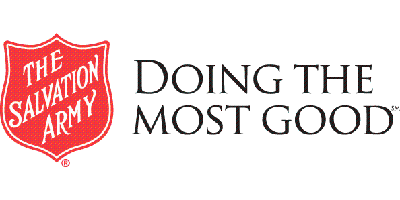|
Position Summary: The Director of Business Development is responsible for securing and managing funding to support Harbor Light programs while ensuring full compliance with all contractual, regulatory, and reporting obligations. This role oversees grant and contract administration, monitors adherence to federal, state, and local requirements, and ensures timely and accurate billing and documentation. Track and reports strategic outcomes to support long-term sustainability and organizational goals and growth. Essential Responsibilities:
- Network to build and maintain relationships with current and potential programs funding sources
- including, but not limited to, federal, state and local governmental agencies, and other communities based organizations.
- Research and identify grant opportunities, foundational, public and private business opportunities that support the mission of The Salvation Army.
- Designs and execute key programmatic elements of the program development process.
- Research and identify opportunities for new programs, partnerships, grants and funding sources that support and align with the strategic plan and mission of The Harbor Light System.
- Serve as project manager to generate proposals and produce supporting documents in response to solicitations and grant opportunities.
- Continuously scan the environment, through research and relationships, to maintain an awareness of potential or upcoming funding opportunities.
- Represent The Harbor Light System in any identified and/or assigned engagement opportunities.
- Continuous supervision and analysis of all revenue generating contracts to ensure that all potential revenue is realized as well as ensuring all contractual billable services are captured and billed.
- Prepare reports and documentation on contract performance, program performance, program outcomes, and strategic initiatives.
- Communicate with internal and external stakeholders on the status of contractual performance and utilization
- Utilize data to inform decisions and improve services, integrating community feedback to ensure responsiveness to local needs.
- Directs and provides guidance to Site Administrators and Clinical Supervisors to effectively allocate resources based on patient volume, space availability, budget constraints, and program priorities, goals, and objectives.
- Manage, coordinate and implement all required changes within the EMR/SAM system to ensure the accurate and seamless electronic recording of all clinical services and billing of all services within the SAHL programs.
- Develop and implement comprehensive business strategies that align with the agency's mission and maximize operational efficiency.
- Collaborates with external stakeholders, including government agencies, community organizations, and healthcare providers, to enhance program accessibility and effectiveness.
- Utilizes analytics to measure program effectiveness, identify areas for improvement, and drive service optimization and collaborate with various departments to integrate data-driven decision-making processes throughout the organization.
- Directs and provides guidance to Site Administrators and Clinical Supervisors to effectively allocate resources based on patient volume, space availability, budget constraints, and program priorities, goals and objectives.
- Perform additional duties as assigned
- HIPAA - Level 1 access to Clinical Records
Qualifications: Education/Experience:
- A master's degree in business or health/human services field or bachelor's degree with equivalent experienceMinimum of seven years of experience in the SUD/Behavioral Health sector
- Minimum of two years of management experience in the SUD/Behavioral Health sector
- Possess a working knowledge of addiction recovery
- Valid Michigan Chauffeur License and approved by The Salvation Army MVR
- TB. test, police clearance, and MDOC LEIN clearance required
Skills, Knowledge & Abilities:
- Good communication skills
Computer Skills:
- Advanced Microsoft Office 365 skills
Certificates and Licenses:
- Complete Safe from Harm training, and keep current as needed
Physical Demands: The physical demands described here are representative of those that must be met by an employee to successfully perform the essential functions of this job.
Average Daily Physical Requirements
|
Frequency
|
Work in stationary position
|
More than 5 hours
|
Move about work area
|
More than 5 hours
|
Use hands/fingers to handle or feel
|
More than 5 hours
|
Reach with hands and arms
|
2 to 5 hours
|
Climb (stairs/ladders) or balance
|
None
|
Bend, stoop, kneel, crouch, or crawl
|
None
|
Communicate with others
|
More than 5 hours
|
Detect flavors or smells
|
None
|
Move objects up to 30 pounds
|
Less than 2 hours
|
Visual acuity
|
More than 5 hours
|
Read and understand written word
|
More than 5 hours
|
Drive or travel
|
2 to 5 hours
|
Work Environment: The work environment characteristics described here are representative of those an employee encounters while performing the essential functions of this job.
Average Daily Environmental Conditions
|
Frequency
|
Environment: No exposure to extreme heat, cold, noise, chemicals or hazardous equipment.
|
None
|
Medical Environment: Exposure to body fluids, radiation, medical equipment, solvents or chemicals.
|
None
|
Noise: Exposure to constant or intermittent extreme sounds.
|
None
|
Temperature: Exposure to extreme heat or cold either indoors or outside.
|
None
|
In addition:
COMMUNICATION: Ability to effectively receive and express ideas, both written and verbal; using clear and concise vocabulary and active listening skills.
|
DECISION MAKING: Ability to select and commit to an effective course of action by understanding issues, comparing solutions and drawing conclusions to resolve problems.
|
INITIATIVE: Ability to act promptly and take steps to solve or settle an issue proactively.
|
LEADERSHIP: Ability to motivate and guide others to ensure performance in accordance with clear expectations and goals; providing timely guidance and feedback.
|
PROBLEM SOLVING: Ability to recognize courses of action to handle problems, gathering and organizing information, identifying cause and effect relationships, and applying contingency plans to solve those problems.
|
|
 The Salvation Army USA Central Territory
The Salvation Army USA Central Territory
 Nov 06, 2025
Nov 06, 2025 

